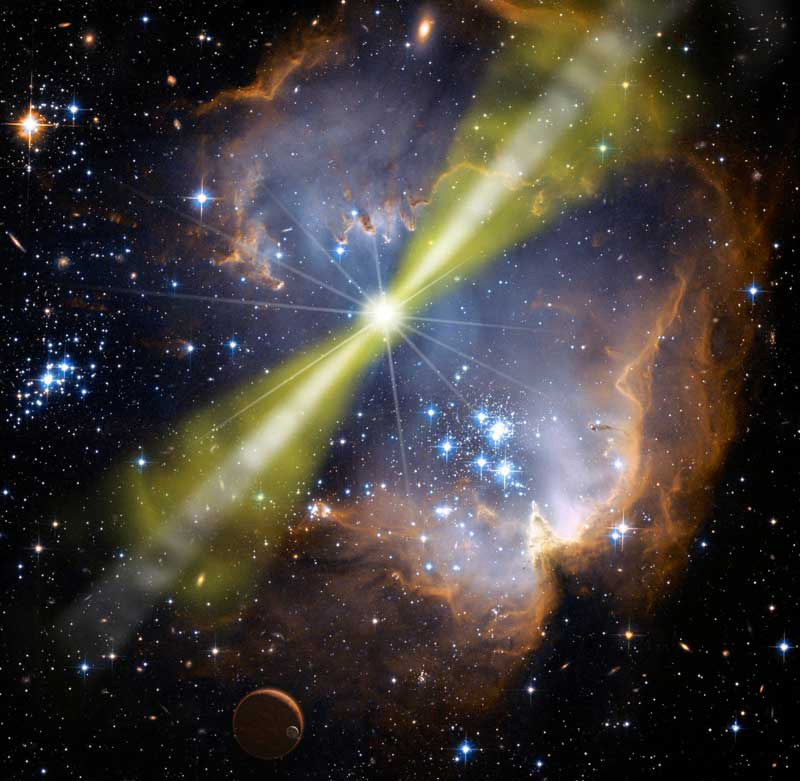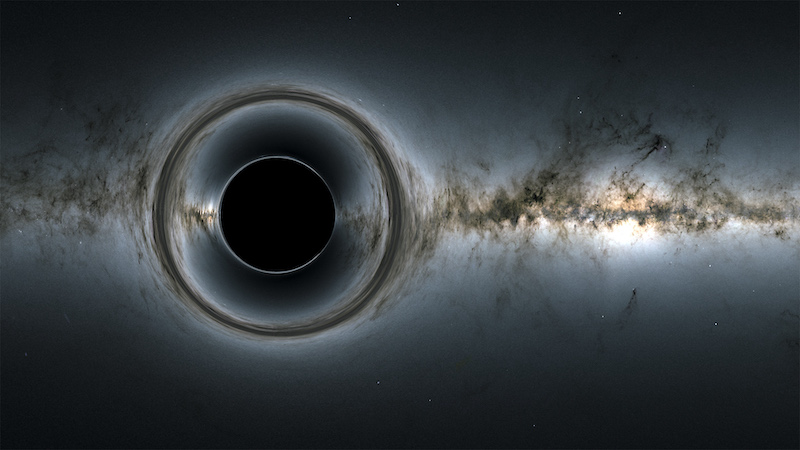
Gamma-ray bursts are the most powerful explosions in the universe. We can’t see them with the eye alone, but if we could, we might see them popping off every now and then in our night sky. And they’re not nearby. Most originate in distant galaxies. Yet, they release such incredible amounts of light and energy that they can be seen far across vast distances. In September 2022, an international team of researchers said they’ve detected a gamma ray burst that left its source when the universe was in its infancy, at only 880 million years old.
The scientists, led by Andrea Rossi at the Italian National Institute of Astrophysics (INAF), published their peer-reviewed paper in Astronomy & Astrophysics on September 21, 2022.
Giant gamma-ray burst reaches Earth
The researchers first detected the light from the gamma-ray burst – named GRB 210905A – on September 5, 2021. The light from the explosion reached our planet after traveling for more than 12.8 billion years. That’s a long trip! It is one of the most distant GRBs ever detected so far. The afterglow light from the burst is also one of the most luminous ever seen. The burst itself must have been massive to produce that much light and energy. Instruments onboard the Neil Gehrels Swift Observatory and Konus first detected the burst. NGSO orbits Earth, while Konus is a GRB monitor on the Wind spacecraft in interplanetary space. It is specifically designed to search for GRBs.
The Hubble and Chandra X-ray Observatory telescopes also observed the GRB.
Time is of the essence, as Rossi noted:
Once again, we have shown that when dealing with transient phenomena, you need to be able to act quickly and have the right tools. You have to be able to both observe the phenomenon when it is still bright to obtain a clear and unequivocal result, and then you need access to those facilities that allow you to cover a large wavelength range, from gamma-rays to X-rays, optical and radio.
Similar to other GRBs
This burst may have been one of the most distant ever recorded, but the researchers say that its characteristics are similar to ones much closer to Earth. For example, the X-ray wavelength properties of the explosion are remarkably similar to those from GRB explosions happening closer to us. This shows that whatever causes the explosion, it hasn’t changed much, if at all, during the lifetime of the universe. Rossi said:
Thanks to our observations, we can conclude that the mechanism responsible for GRBs does not evolve with the universe.
Only a few GRBs have been seen before from so early in the universe. Team member Carole Mundell said:
As one of the most powerful and distant cosmic explosions yet found, this rare gamma-ray burst joins a tiny club of such bursts discovered from early in the history of the universe, and this one is from the brightest host galaxy ever detected. This discovery gives us new understanding and confirmation that massive stars – which live fast and die hard – are forming and evolving early in the universe.

It came from a black hole
So what kind of GRB was this? There are two basic types, long and short. Long GRBs originate from black holes formed after a massive star collapses. Short GRBs are different. They are caused by collisions of dense, compact objects like neutron stars or magnetars. In this case, the GRB is a long one. It is most likely to have originated from a black hole, as the paper stated:
The total jet energy is likely too large to be sustained by a standard magnetar, and it suggests that the central engine of this burst was a newly formed black hole.
What is a gamma-ray burst?
Gamma-ray bursts are the most powerful singular events in the universe. If your eyes could see them, they would look like brilliant bursts of light. Military satellites accidentally discovered them in the early 1970s. How? Nuclear bomb tests show as gamma-ray flashes to those satellites. These particular flashes, however, did not come from nuclear bombs … They came from deep space!
Eventually, astronomers determined they originated from distant galaxies. The amount of energy in a gamma-ray burst is equivalent to converting all the mass in the sun to pure radiation in a matter of seconds. Now that is powerful!
This newest discovery will help astronomers better understand GRBs and how they behave.
Bottom line: An international team of astronomers say they have discovered a new giant gamma-ray burst that originated from the infant universe when it was 880 million years old.
Source: A blast from the infant Universe: The very high-z GRB 210905A?











